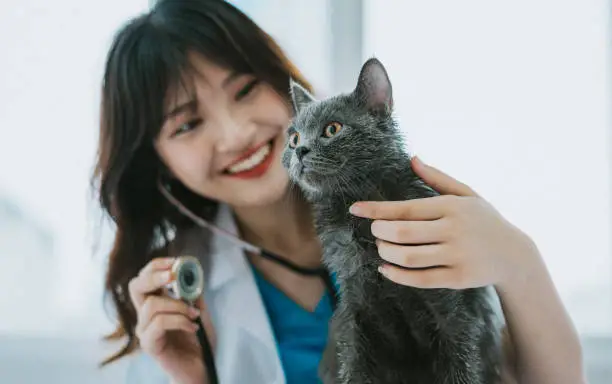Introduction
Bird flu, or avian influenza, is a viral infection primarily affecting birds, but in rare cases, it can infect other animals, including cats. While the occurrence of bird flu in cats is uncommon, it’s important for pet owners to be aware of the risks, symptoms, and preventive measures. This guide, informed by veterinary expertise, provides everything you need to know about bird flu in cats, from transmission and symptoms to prevention and treatment options.
What is Bird Flu?
Bird flu is caused by avian influenza viruses, which are categorized into different strains, with H5N1 being one of the most concerning due to its potential to infect humans and other animals. While bird flu primarily affects poultry and wild birds, it can sometimes jump species, infecting mammals like cats, dogs, and even humans. The virus is highly contagious among birds, leading to severe outbreaks, especially in domestic poultry populations.
How Can Cats Get Bird Flu?
Cats can contract bird flu through several transmission routes, though such occurrences are rare. The primary ways a cat might become infected include:
- Direct Contact with Infected Birds: Cats that hunt or come into contact with infected birds or their droppings are at risk of contracting the virus.
- Consumption of Infected Birds: If a cat consumes an infected bird, the virus can be transmitted through ingestion.
- Environmental Contamination: In areas with bird flu outbreaks, environmental contamination, such as virus-laden bird droppings, can pose a risk to cats.
- Close Contact with Infected Cats: In rare cases, the virus can spread from one infected cat to another, though this is not a common mode of transmission.
Symptoms of Bird Flu in Cats
The symptoms of bird flu in cats can vary depending on the severity of the infection. Common signs to watch for include:
- Respiratory Symptoms:
- Coughing
- Sneezing
- Difficulty breathing
- Nasal discharge
- Gastrointestinal Symptoms:
- Vomiting
- Diarrhea
- Loss of appetite
- General Signs of Illness:
- Lethargy or fatigue
- Fever
- Dehydration
- Neurological Symptoms:
- Tremors
- Seizures
- Uncoordinated movements (ataxia)
If you notice any of these symptoms in your cat, particularly if they have had contact with birds, it’s crucial to seek veterinary attention immediately. Early diagnosis and treatment can significantly improve the chances of recovery.
Diagnosing Bird Flu in Cats
Diagnosing bird flu in cats requires a thorough examination by a veterinarian. If bird flu is suspected, the vet may perform several diagnostic tests, including:
- Physical Examination: The vet will assess the cat’s overall health and look for specific signs of respiratory distress, fever, or neurological issues.
- Blood Tests: Blood tests can help detect the presence of the avian influenza virus or indicate an immune response to the infection.
- Swabs and Cultures: Nasal or throat swabs may be taken to test for the virus. These samples are sent to a laboratory for analysis.
- X-rays or Ultrasound: In some cases, imaging may be necessary to assess the extent of respiratory or internal organ involvement.
Treatment Options for Bird Flu in Cats
There is no specific antiviral treatment for bird flu in cats, but supportive care can help manage symptoms and improve the cat’s chances of recovery. Treatment options may include:
- Fluid Therapy: To combat dehydration, the vet may administer fluids intravenously or subcutaneously.
- Nutritional Support: If the cat is not eating, nutritional support through feeding tubes or appetite stimulants may be necessary.
- Antibiotics: While antibiotics cannot treat the virus, they may be prescribed to prevent or treat secondary bacterial infections.
- Oxygen Therapy: Cats with severe respiratory symptoms may require oxygen therapy to assist with breathing.
- Hospitalization: In severe cases, hospitalization may be necessary to provide intensive care and monitoring.
Preventing Bird Flu in Cats
Preventing bird flu in cats involves minimizing their exposure to the virus. Here are some steps you can take to protect your cat:
- Keep Cats Indoors: Limiting outdoor access reduces the risk of contact with infected birds or contaminated environments.
- Supervise Outdoor Time: If your cat spends time outdoors, supervise their activities to prevent hunting or contact with birds.
- Avoid Raw Poultry Diets: Do not feed your cat raw poultry, as this could pose a risk of transmitting avian influenza.
- Stay Informed During Outbreaks: If there is a bird flu outbreak in your area, take extra precautions by keeping your cat indoors and away from any birds.
- Practice Good Hygiene: If you handle birds, especially during an outbreak, wash your hands thoroughly before touching your cat to prevent cross-contamination.
Risks and Concerns for Cat Owners
While bird flu in cats is rare, it is still a cause for concern due to the potential severity of the infection. Here are some key risks and considerations for cat owners:
- Zoonotic Potential: Some strains of avian influenza, such as H5N1, can infect humans. Although the risk of a cat transmitting bird flu to a human is extremely low, it’s important to exercise caution, especially if your cat shows signs of illness.
- Impact on Multi-Pet Households: In households with multiple pets, an infected cat could potentially spread the virus to other animals. Isolating an infected cat and maintaining strict hygiene can help prevent the spread of the virus.
- Veterinary Costs: Treating a cat with bird flu can be expensive, particularly if hospitalization is required. Pet insurance or setting aside a pet health emergency fund can help mitigate these costs.
What to Do If You Suspect Your Cat Has Bird Flu
If you suspect that your cat may have contracted bird flu, it’s essential to act quickly. Here are the steps you should take:
- Contact Your Veterinarian: Immediately contact your vet for advice. They may recommend bringing your cat in for an examination and testing.
- Isolate Your Cat: To prevent potential spread to other pets, keep your cat isolated until you can get a definitive diagnosis.
- Avoid Handling Birds: If you’ve been in contact with birds, particularly during an outbreak, avoid handling your cat until you’ve thoroughly washed your hands and changed clothes.
- Monitor for Symptoms: Keep a close eye on your cat for any changes in behavior or health, and report these to your vet.
Conclusion
While bird flu in cats is rare, understanding the risks, symptoms, and preventive measures is crucial for responsible pet ownership. By staying informed and vigilant, you can protect your cat from this potentially serious illness. If you suspect your cat may have been exposed to bird flu, seeking prompt veterinary care is essential. With the right knowledge and precautions, you can help ensure your cat’s safety and well-being.











Leave a Reply